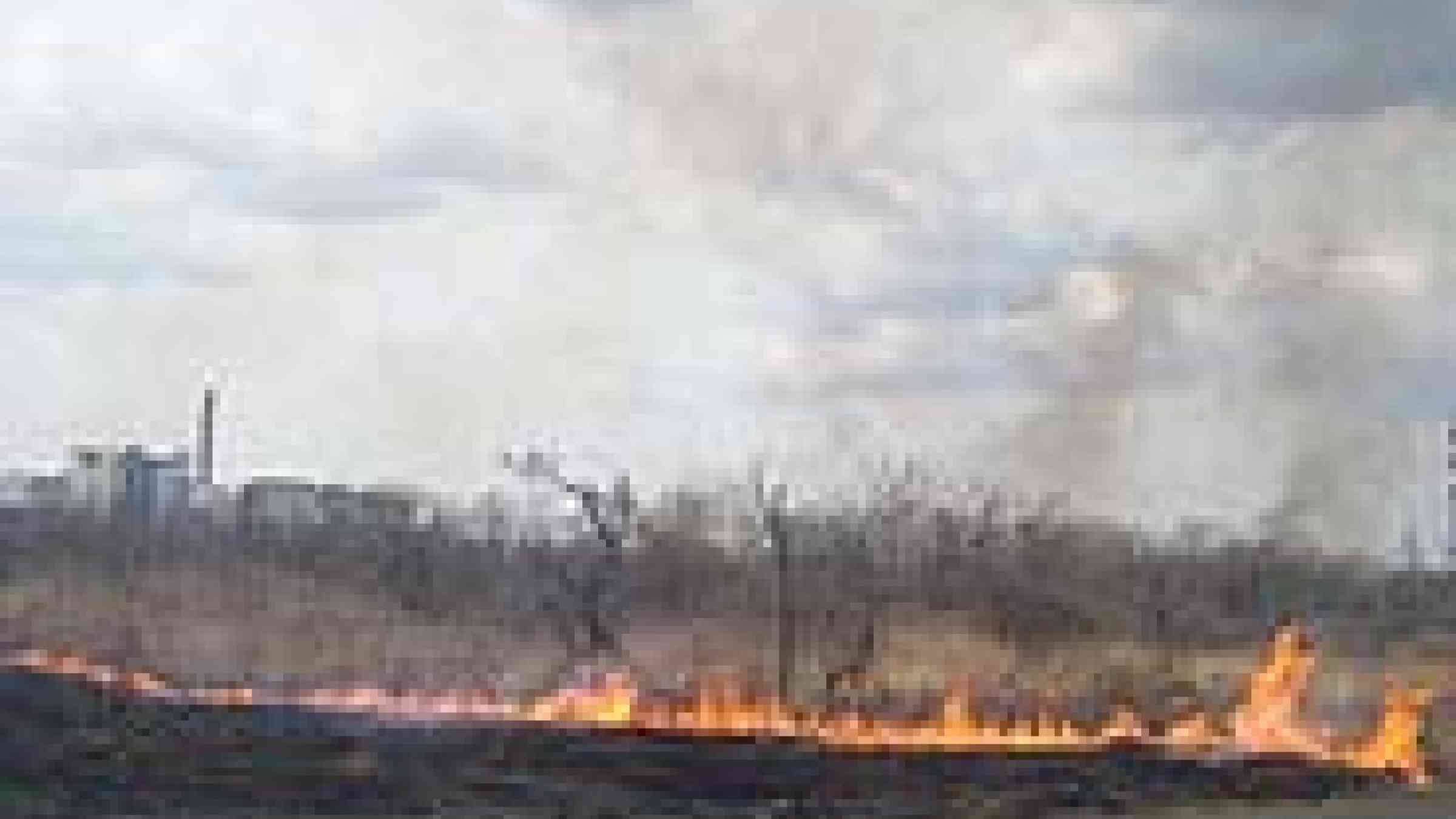Please help us improve PreventionWeb by taking this brief survey. Your input will allow us to better serve the needs of the DRR community.
WWF: Monitoring Russian wildfires a call to action
Primorye, Russia - Land of leopards in flames
Satellite monitoring of the worst fire season since 1996 in key biodiversity areas of the southernmost part of the Russian Far East has pinpointed a need to make landholders and state authorities take greater responsibility for fires on their land.
The monitoring showed that in the autumn spring fire season of 2008-2009, one third of south-west Primorye – the maritime province bordering China and North Korea - was lost in fires. Among significant wildlife areas affected was the Leopardovyi federal wildlife refuge where 15 forest fires covering 11% of its entire area were registered.
The 169,000 hectare refuge created in 2008 is vital habitat for the Far Eastern leopard (also known as the Amur leopard) which has the dubious distinction of being the world’s most endangered large cat. The area is also home to Siberian tigers
“This year we decided to define not only borders of burnt plots but also exact location of fire sources,” said Denis Smirnov, head of the Forest Programme at WWF-Russia’s Amur branch.
“We then overlapped this data on land users’ map and indentified persons and organizations responsible either for fire ignition or for not taking appropriate actions to combat fires”.
Results have shown that fires did not only break out in vacant state reserve land or undistributed agricultural lands. More than half of monitored fires broke out on owned or leased land.
For instance, In Leopardovyi refuge significant fires broke out in lands of Agro Khasan Ltd., the largest land owner across Khasanskii district, as well as on army forestry lands.
“To stop further degradation of vital leopard’s habitat we are suggesting some priority actions for the provincial and district administrations,” Smirnov said.
“First, they need to appoint responsible persons or bodies for fire prevention and suppression on state reserve lands and agricultural lands, and provide funding for these activities. Second, they need to rest responsibility on land owners and leaseholders for combating forest fires on their plots.”
The results of satellite monitoring conducted by WWF in cooperation with the non-profit partnership Transparent World were presented earlier this month to the Khasanskii district administration, at a preparatory consultation for the fire season this fall.
The research forms part of a broader WWF project on forest restoration in the leopard’s habitats.
Explore further
Please note: Content is displayed as last posted by a PreventionWeb community member or editor. The views expressed therein are not necessarily those of UNDRR, PreventionWeb, or its sponsors. See our terms of use
Is this page useful?
Yes No Report an issue on this pageThank you. If you have 2 minutes, we would benefit from additional feedback (link opens in a new window).
